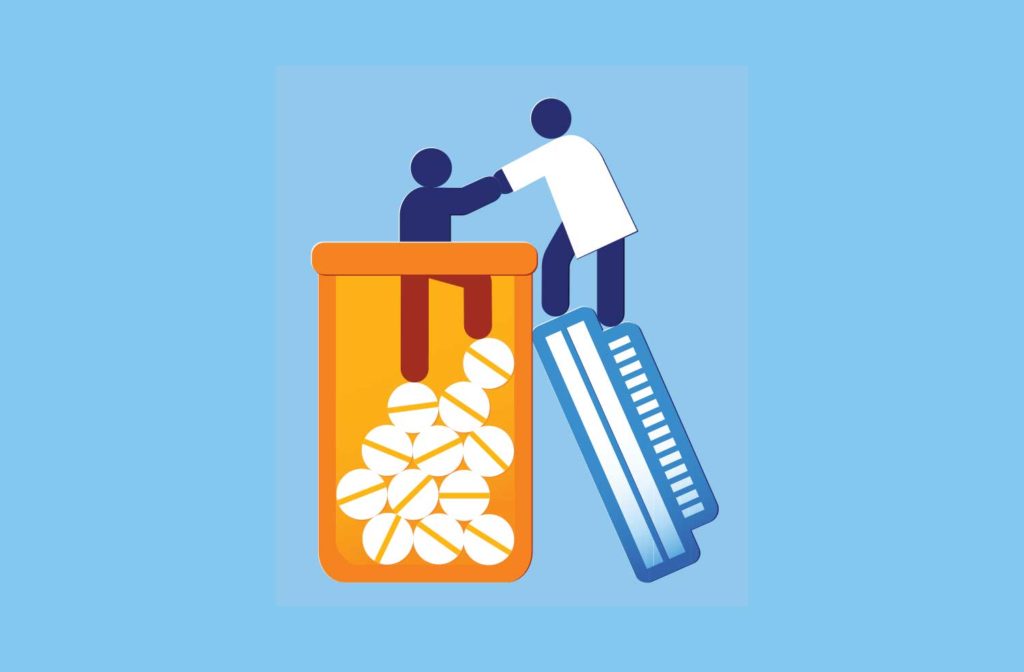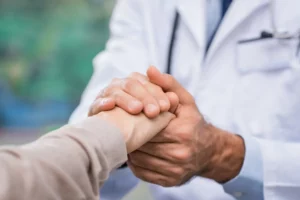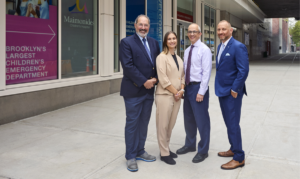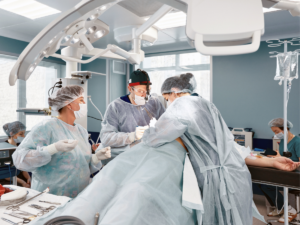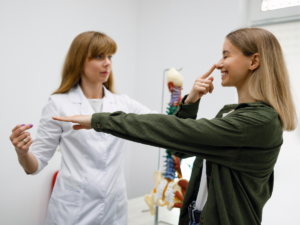Summary
The opioid crisis in America continues to take tens of thousands of lives each year. Dr. Sergey Motov discusses how Maimonides is doing their part to combat this epidemic, while maintaining Maimonides’ commitment to compassionate pain management.
Listen on Spotify Listen on Apple Podcasts Listen on Google Podcasts
Transcript
Caitlin Whyte: The opioid crisis in America continues to take tens of thousands of lives each year. And here at Maimonides, we want you to know that we are doing our part to combat this deadly epidemic. Joining us to share more about this work is Dr. Sergey Motov, an attending physician in the Emergency Department at Maimonides.
This is Maimonides Med Talk. I’m your host, Caitlin Whyte. Now, doctor, to begin, when did Maimonides first become involved in dealing with the opioid crisis?
Sergey Motov, MD: I would say early 2000s, it became apparent for all of us in the institution that uncontrolled liberal prescribing practices of opioid analgesics for pretty much anything needs to stop because we were witnessing uncontrolled public health crisis known as the opiod epidemic. And I believe slowly in the early 2000s, we started kind of gathering together and reassessing our approach to pain management with respect to opioids.
Caitlin Whyte: So in the decade, two decades really, since then, what has Maimonides done to help combat this crisis?
Sergey Motov, MD: So I would like to put this concept I usually tell my colleagues and when I do education, it comes to three P’s, it’s prevention, it’s protection, and it’s provision of treatment.
When it comes to prevention, we are an institution, we’re very big on providing very compassionate and very passionate pain management to everyone who comes in by using cutting edge evidence. And we’re following a very simple mantra. We’re trying to keep opioid naïve patients opioid naïve. We’re not denying opioids, I just want to be very clear. We are not denying opioids to our patients. Institutions and every physician who takes care of patients in pain firmly believe that opioid deserves special place in pain management. We are pushing towards more refined, more judicious opiod prescribing practices. And a prevention component is we’re trying to combine opioids with non-opioid analgesics or non-pharmacological treatment modalities and, once again, to refine their use and be more judicious.
Protection, we’re trained to identify patients who exhibit an evidence of opiod misuse or do you have full-blown opiod use disorder. And we’re trained to counsel this patient. We’re trained to provide warm handoff to addiction services and trying to provide Naloxone. Take-home Naloxone was a big part of our institutional initiative to save lives.
And the last part, provision of treatment, we’ve instituted a life-saving treatment modality for patients with opioid use disorder. We initiated buprenorphine treatment in the ED and then some part of the hospitals as well.
Caitlin Whyte: Well, let’s focus on the pain management aspect of this epidemic. When a patient comes into your emergency room and they are complaining about pain, how is their pain treated?
Sergey Motov, MD: Most important thing when it comes to pain management, and most of them, if not all, come through my department, emergency department, we practice patient-centered and pain syndrome-specific approach. We shine away from or we’re staying away from one-pill-fits-all approach. Every patient’s individual. If you have a headache, it doesn’t mean that the patient who has a headache has exactly the same problem. So patient-centered, pain syndrome-specific, by clearly setting up the expectations. This is very, very important.
We’re very big on engaging patients from the early, from the get-go, in shared decision-making by clearly stating what’s their painful syndrome is all about, what’s the natural expectation, what’s the natural trajectory of the painful syndrome. And the goal is to improve and to try to restore the functional impairment so they can go back about their daily activities. Not much of the zero pain, because zero pain concept does not exist. For this, we’re very good at utilizing non-pharmacological and pharmacological treatment modalities by combining opioid and non-opioid analgesics.
Caitlin Whyte: Well, and then how are patients advised to manage pain once they leave the hospital and they’re back at home?
Sergey Motov, MD: Same principle applied, shared decision-making. In addition to it, patient gets clearly prescribed printout, verbal instructions on what to take, what medication, what route, what frequency, and more importantly, what medication can it be combined with, what to look for. We’re very clear specifically when it comes to acute pain that if pain doesn’t get any better, let’s say in 48 hours, the patient is advised to come back to either ED to be reassessed or to seek help in their primary care physician or pain specialist.
In addition to it, upon discharge, we put big emphasis on safety of our patients and their family members. And we provide counseling on proper storage and disposal of unused medication, specifically getting towards opioids.
Caitlin Whyte: So doctor, has Maimonides participated in any research projects or clinical trials regarding non-opioid pain treatment?
Sergey Motov, MD: Well, Maimonides has been a champion in several big initiatives and several big projects as a practice, change in practice, is in pain management in areas of surgery, particularly breast surgery, in areas of orthopedics, urology, and the emergency medicine. And in emergency medicine, that’s my niche, we’ve been conducting over 10 years a great deal of prospective clinical trials. I have a leading role on analgesic efficacy and safety of ketamine as an analgesic for managing a variety of acute and chronic painful conditions. We’ve put special emphasis on utilizing non-steroidal anti-inflammatory medication in the parenteral form, oral form or even topical form.
I know my colleagues in the surgical service and orthopedic service are pushing boundaries and utilizing long-acting and local anesthetic with the premise of providing regional blocks and very good infiltrative analgesia that allows us to reduce consumption of opioid analgesics, which leads to early ambulation and restoration of patient’s functions.
So we’re pushing the boundaries and we’re trying to be very cutting edge and we have a great result because of it.
Caitlin Whyte: Well, doctor, it’s a huge topic to cover in one podcast, but is there anything else you think is important for people to know about Maimonides’ work in fighting the opioid crisis?
Sergey Motov, MD: I just wanted to emphasize that with the motto of Maimonides, you know, passionate about people and compassionate about our community, that’s how we approach pain management. We understand the crisis. We understand what needs to be done. And once again, the concepts of prevention, protection and provision of life-saving medication for patients in pain, in patient with opiod misuse, in a patient with established opiate use disorder is a paramount of successful endeavors that our institution does in a very passionate and compassionate manner.
Caitlin Whyte: Well, doctor, I can’t thank you enough for joining us today and for being on the front lines of this horrible epidemic in the emergency room. Thank you so much for all you do.
Please visit maimo.org to learn more about all the services offered at Maimonides. This has been Maimo Med Talk. I’m your host, Caitlin Whyte. Stay well.

